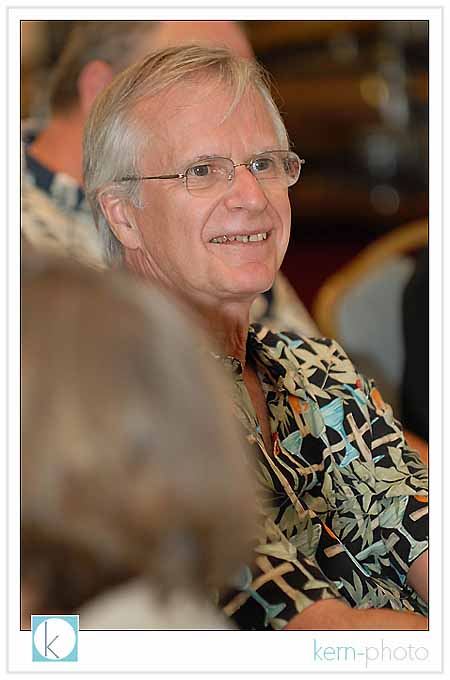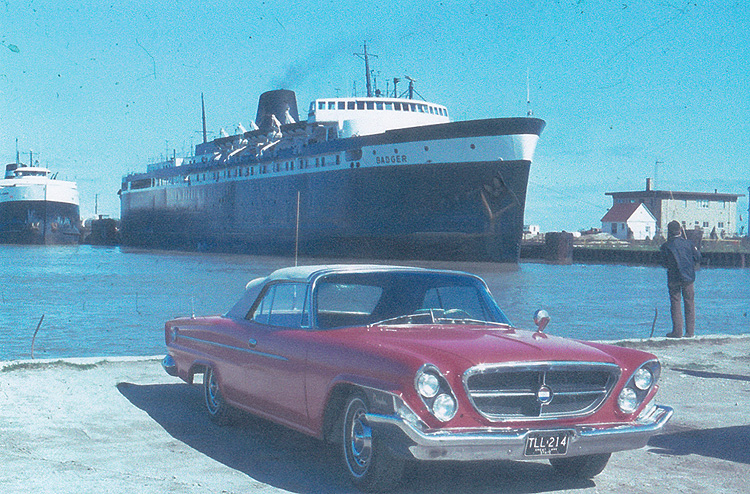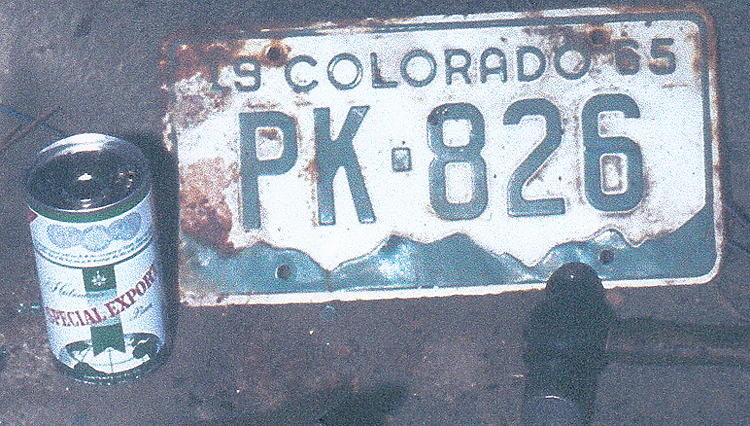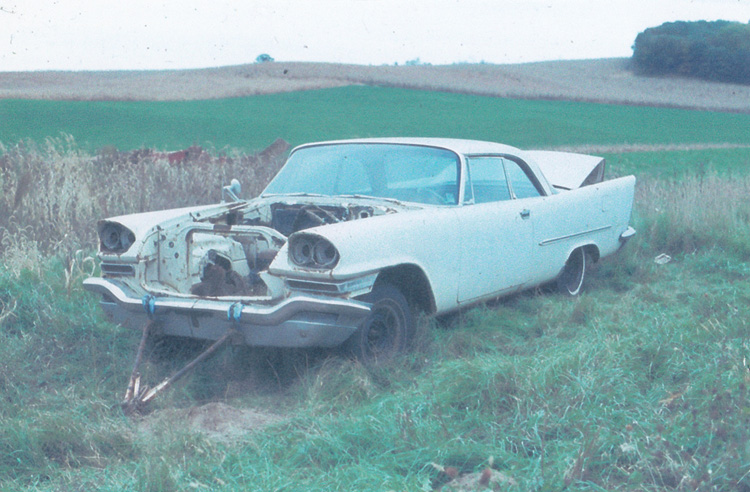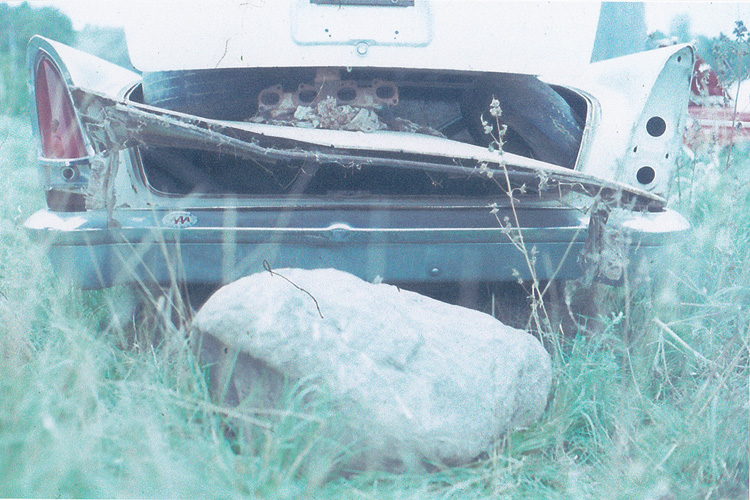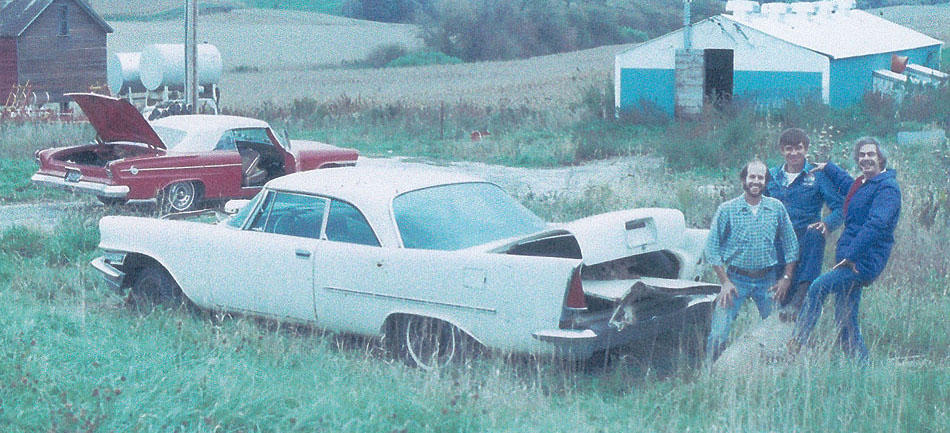
This 300
story began for me some 10 years ago in a windswept field in November
north of Denver, Colorado. There, several of us 300 nuts were
preparing a dozen(!) 300’s for an attempt to tow and drive them
back east. (That is
definitely another long story for another Newsletter.) One of those
twelve was a certain Mesa Tan D coupe LC4 1044. A little worse for
wear, it was missing its engine and some trim, but the body was
great, and it was the first Mesa Tan D I had ever seen. More
importantly, a check in the trunk confirmed our serial number
research – the Fuel Injection pump access hole was there!
Well, much
has happened since 1971 -- to me, the Club, and that D coupe. But I
never stopped thinking about it and how it for left in Denver that
distant November – or how it wasn’t
there the next spring! So, a year or so ago when “my” D
became available, I was ready – it wasn’t going to get
away this time!
The D by
now had made its way to Minnesota (for a car without an engine, it
sure seemed to have no problem getting around) and for a price it
could be mine. Agreement was reached and several Minnesota trips were
planned, only to be scrubbed for one reason or another. Finally, the
car’s owner, Randy Thorne, called to inform me he was going to
relocate to the west coast and to let me know the D now had
to leave. The deadline was set so a decision had to be made on
something with which to tow the car from Minnesota, and someone as
crazy as me to co-pilot. My old faithful 300 H convert would have to
do for the former – George Riehl filled the bill for the
latter.
We packed
the H with tow bar, hydraulic jack, spare tires (never enough), extra
oil (the H partakes moderately), tools, and gasoline credit cards.
Heading north from Holly, Michigan at about 2 AM in early October
took us through the first snows of the year (but no salt!). The H
hadn’t seen snow since our Toronto Meet in 1976.
Let me
tell you, there were a lot of people on that trip that must have felt
like it took 40 hours. They were an odd color too – sort of a
pale green. Yes, the wind was still blowing over the water, and even
a ship is rocked a little with 12 foot waves. Every time an
especially “good” one (you have to understand that I like
roller coasters too) came along, a loud groan and bang was heard from
deep within the vessel. I hoped I would still recognize the H after
they un-piled the rail cars!
As
mentioned, all fuel injected cars had an electric fuel pump in the
gas tank. Service access was through the trunk floor (a little
deformed in 1044 now because of that damn rock!!) by removing a
circular cover plate. Why not have a look? All waited expectantly as
Dave and I carefully tapped loose the retaining ring for whatever
would be in there. Fantastic! What we pulled out was the original
Bendix electric fuel pump, looking exactly like the Chrysler
blueprint said it would. No, I can’t report it still worked,
but you know we tried!
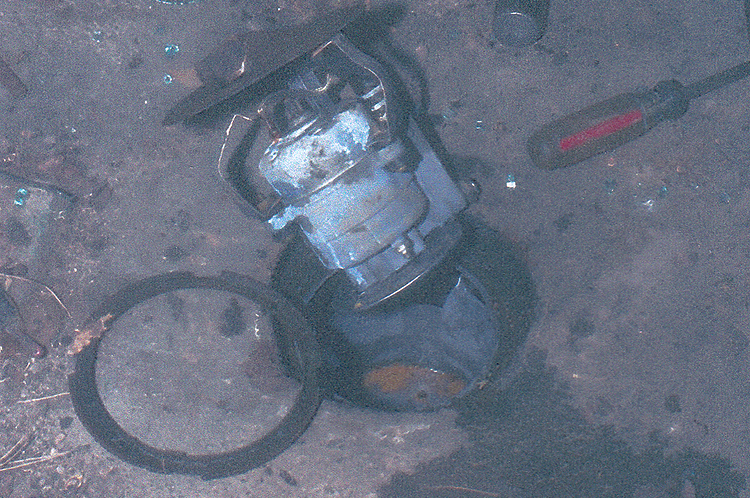
At last
the D was ready for the final leg of its 10 year journey from Denver
to Holly. With a transmission, a couple of torque converters, and two
cases of Green Death for ballast, we headed out that afternoon. The
14 hour trip (around the lake this time) was uneventful, once the tow
bar decided how it wanted itself attached. Finally home, the D just
begged for some TLC, so George and I rubbed out and waxed the
complete left side – just to see how it would look. Except for
some nicks and scratches, that 23 year old Mesa Tan Enamel looked as
bright and shiny as when it left the Chrysler Jefferson Assembly
Plant.
My 300D is
now safely stored out of winter’s harm next to the “Blue
Goose” (polar blue/blue interior 300F convert) while I try to
collect parts and information pertinent to its restoration. Why was
it made in October of 1957, several months before “regular”
F.I. production began in February of 1958, but well after the three
press review F.I. D’s in mid-September? Its “dealer”
code and region are the same as those of LC4 1250, the Tahitian Coral
Motor Trend test car. Was mine also the subject of a road test? I
have never seen or heard of one. It was picked up by the customer at
Jefferson on October 24, 1957 according to Chrysler records.
Lubrication stickers indicate it lived in Marion, Ohio at one time
and was serviced at another time (no year or mileage) by the
Fisher-Record Chrysler Dealership on Kercheval Avenue in Detroit, not
too far from where it was built. Coincidentally, this was the
originating dealership for Dave Schwandt’s Polar Blue (code
999) 300F hardtop, a fact he learned from paperwork in the car.
Imagine our surprise to discover the same name on the D door sticker
not five minutes after at Dave’s 300F special order sheet!
To me,
much of the fun of owning and restoring 300’s is not only
searching for rare parts, but also reconstructing their history. LC4
1044 will require much effort in both areas but promises just as much
reward. I can’t wait!
2013 update: Gil writes that he still owns the car. Not only that, he still has one of those "Green Death" beer cans too! Back |
